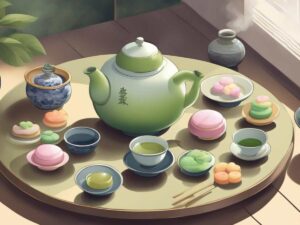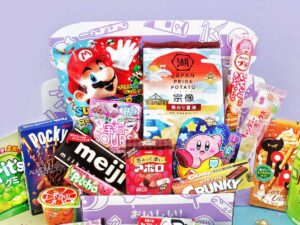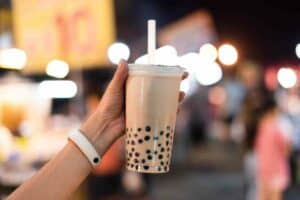Onigiri to Japan is what a sandwich is to the U.S.
An easy-to-make meal, and you can flavor it whatever way you want, but made the right way and it’s the perfect comforting soul food.
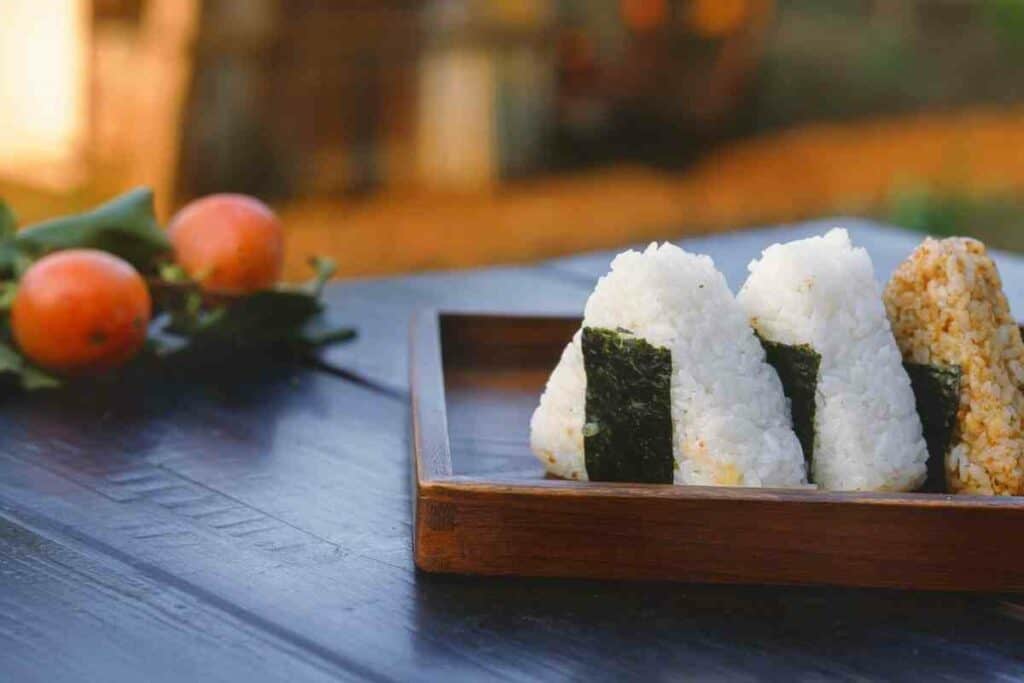
If you’ve ever ordered onigiri or you’ve seen it at a restaurant, you know that it’s almost always in the shape of a triangle.
That looks pretty complicated. Does it need to be a triangle?
Table of Contents
Why The Triangle Shape?
No, onigiri does not need to be a triangle.
There are three different traditional shapes that onigiri are made in, the triangle is just the most common.
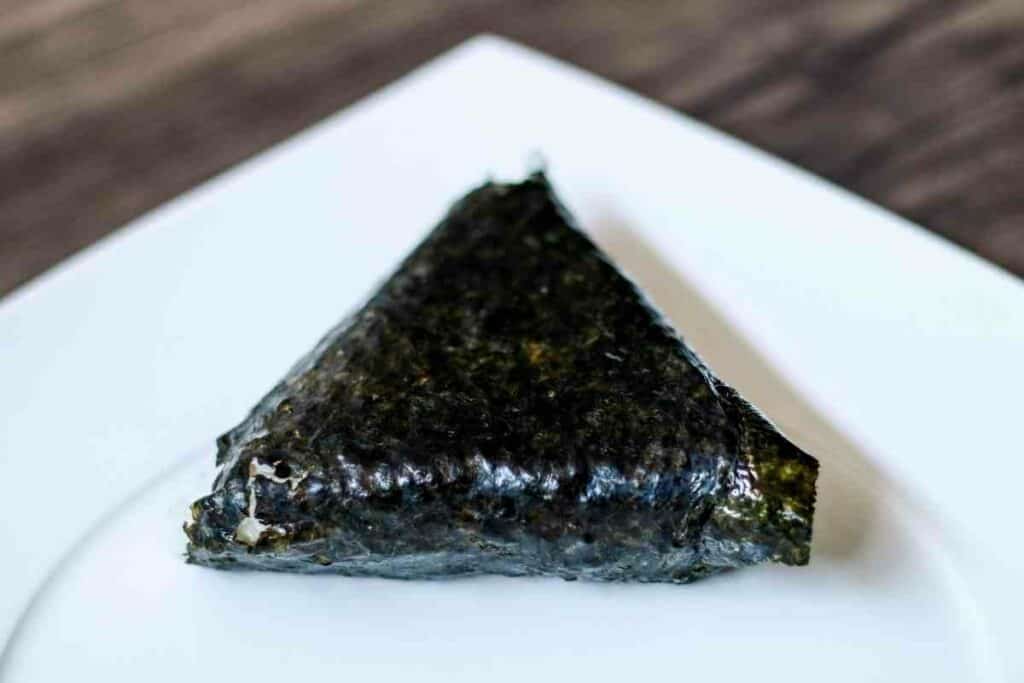
Each shape has a different purpose.
The triangle is the most popular because:
- It’s easy to mold with your hands
- It’s easy to eat on the go
- It’s also easy to fit in a bento box, which is the traditional way to pack onigiri for lunch
This shape specifically is said to be from early travelers.
They would shape the onigiri into the shape of a mountain to ask for protection. They sought protection from the weather, illness, and kami.
Did You Know? Kami are spirits believe to be everywhere in nature. This shape was also easier for travelers to pack and carry and space was utilized the best way.
Other Onigiri Shapes
When it comes to traditional hand-formed onigiri, the other two shapes are the flattened circle and the cylinder.
Flattened Circle Onigiri Shape
The flattened circle onigiri is thought to be the original shape.
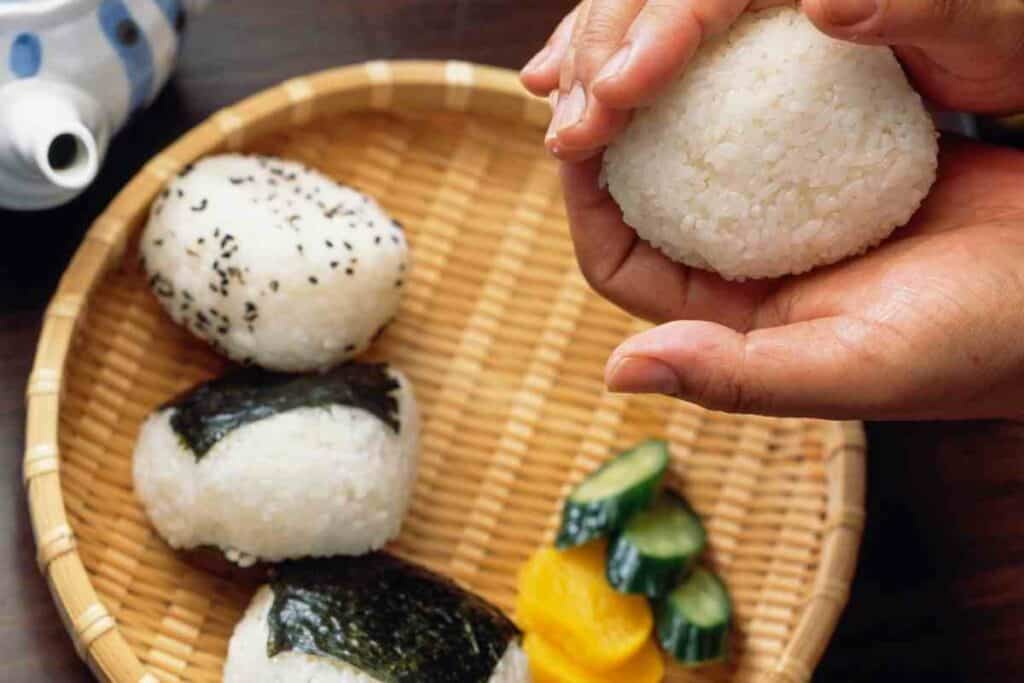
It’s said that this is the easiest shape to make by hand. You simply flatten the rice and then mold it into a circle.
This shape was also easy to eat with your hands and didn’t require any utensils.
Cylinder Onigiri Shape
The cylinder, or tawara, is a special shape.
It is the shape that resembles a straw bag that was used to store rice or transport it. This shape is said to be for special occasions or really lucky people.
It’s also a popular choice for onigiri that are given as gifts.
Have Fun With It
One of the great things about onigiri is it doesn’t need to look a certain way.
If you’re making it at home, feel free to shape it however you want.
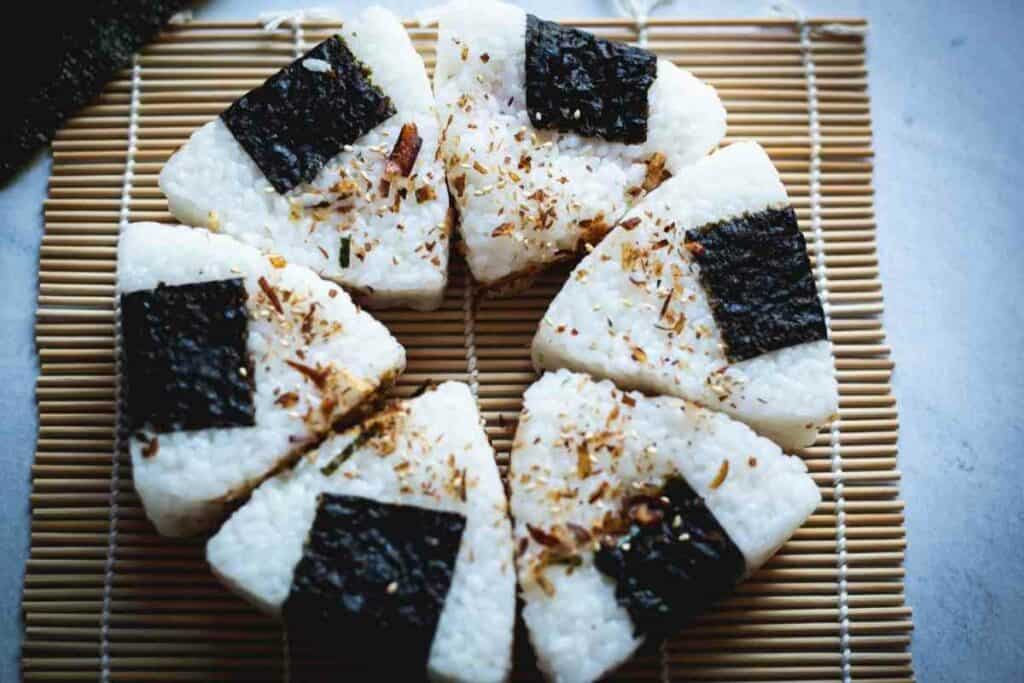
Get the kids involved and use fun-shaped molds to make interesting shapes.
For Example – You can make stars, hearts, or animals, or you could be extremely creative and make an onigiri that looks like Elvis.
How to Flavour Onigiri
Just like a good sandwich, there are so many different ways you can customize them and flavor them.
Spices
Try sprinkling some furikake on your onigiri.
Furikake is a dry seasoning that usually includes sesame seeds, seaweed, and salt. You can find it pre-made or you can make your own.
Another popular way to flavor onigiri is with shio koji. Shio koji is a type of koji, which is a fermented rice seasoning.
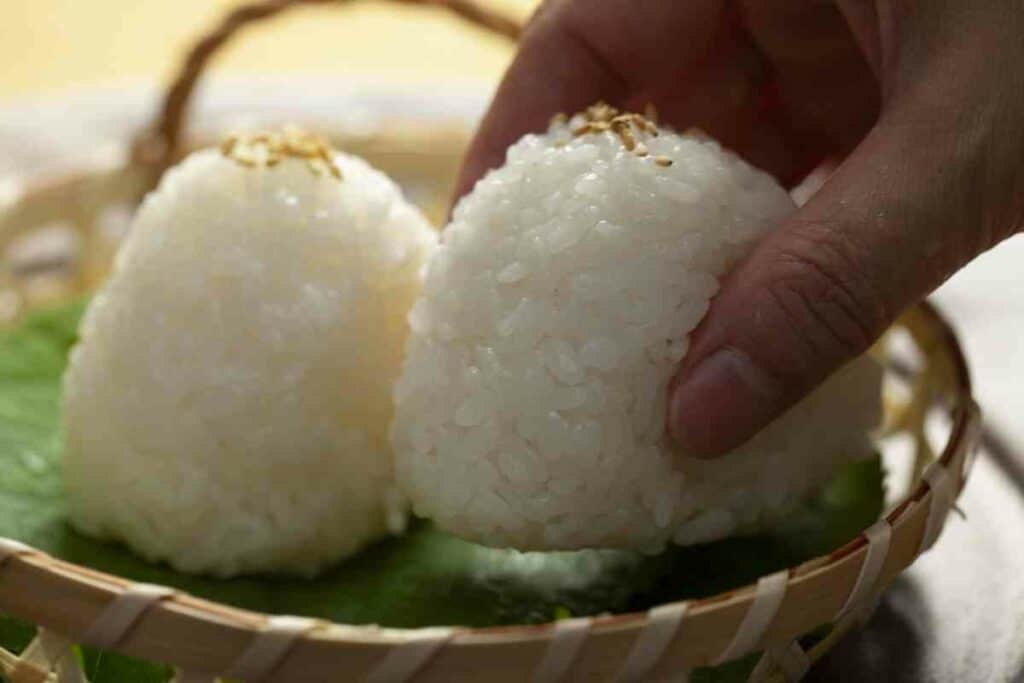
It’s made with salt and Aspergillus oryzae, which is a type of fungus. Shio koji gives onigiri a slightly sour and salty taste.
If you like your onigiri spicy, try sprinkling some chili powder or flakes on it. This is a popular way to eat onigiri in Korea.
Mixed Rice
This may be one of the trickiest ways to flavor onigiri.
This technique adds ingredients to the rice before the onigiri are formed.
If the ingredients are too wet or too greasy, it will prevent the rice from sticking together and holding its shape.
Fillings
You can also add some fillings to your onigiri to change up the flavor.
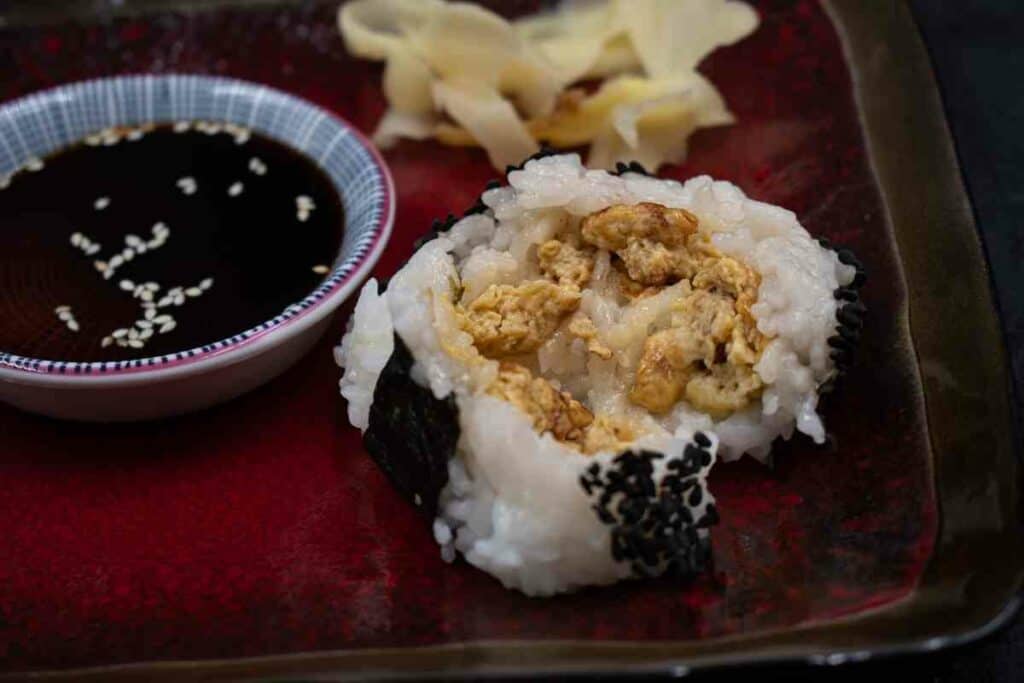
Popular fillings include:
- Umeboshi (pickled plum)
- Tuna mayo
- Salmon
- Cheese
- Spinach
- Katsuobushi (smoked bonito flakes)
There are no limits to what you can fill onigiri with.
If you don’t see anything you like on this short list, find something you do like the taste of. Or try something new and make a sweet onigiri instead of a savory one!
Cooking Methods
The way you cook onigiri will give it a different flavor, much like a grilled cheese is very different from a deli sandwich.
Cooking onigiri in a dish with other foods will infuse it with new flavors.
This is a popular way to eat onigiri in Okinawa. The dish is called Champuru and it includes stir-fried vegetables, tofu, and egg.
You can also try grilling your onigiri for a smoky flavor, or deep frying one to make the outside crispy.
How to Unwrap an Onigiri
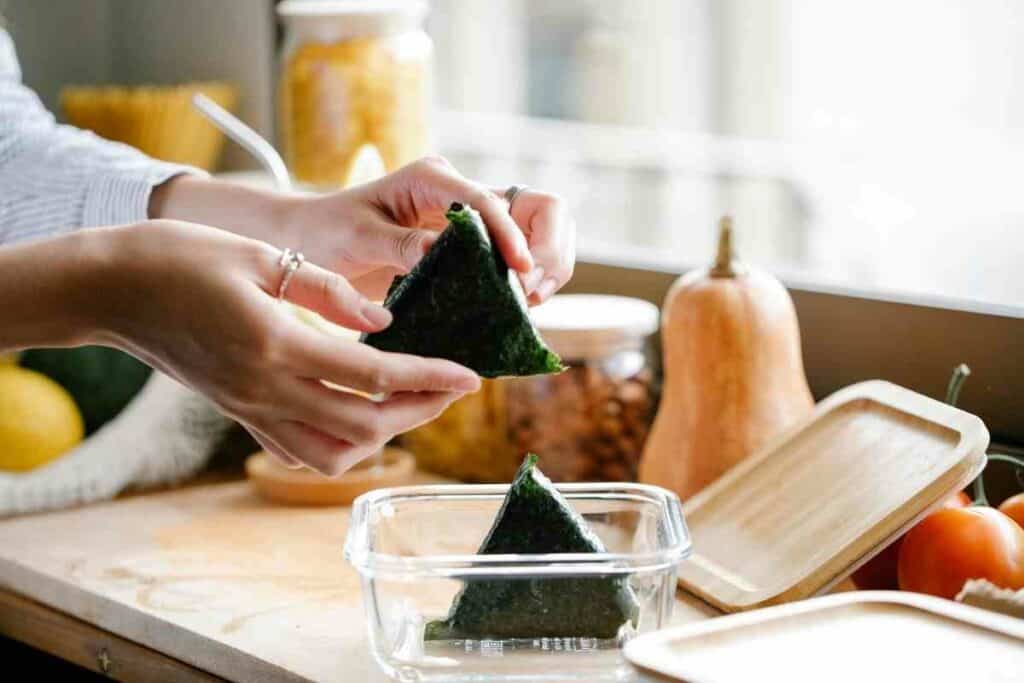
Onigiri are usually wrapped in kelp or nori seaweed.
This not only keeps the onigiri together, but it gives you something to hold while you eat the onigiri so you don’t get your fingers sticky from the rice.
If you’re eating onigiri at home, you can eat it however you’d like:
- with chopsticks
- cutting it apart with a fork and knife
- eating it like you would a sandwich, and holding it in both hands
It’s up to you.
Unlike onigiri you make at home, onigiri from stores will be wrapped in plastic to keep it held together and to keep germs off.
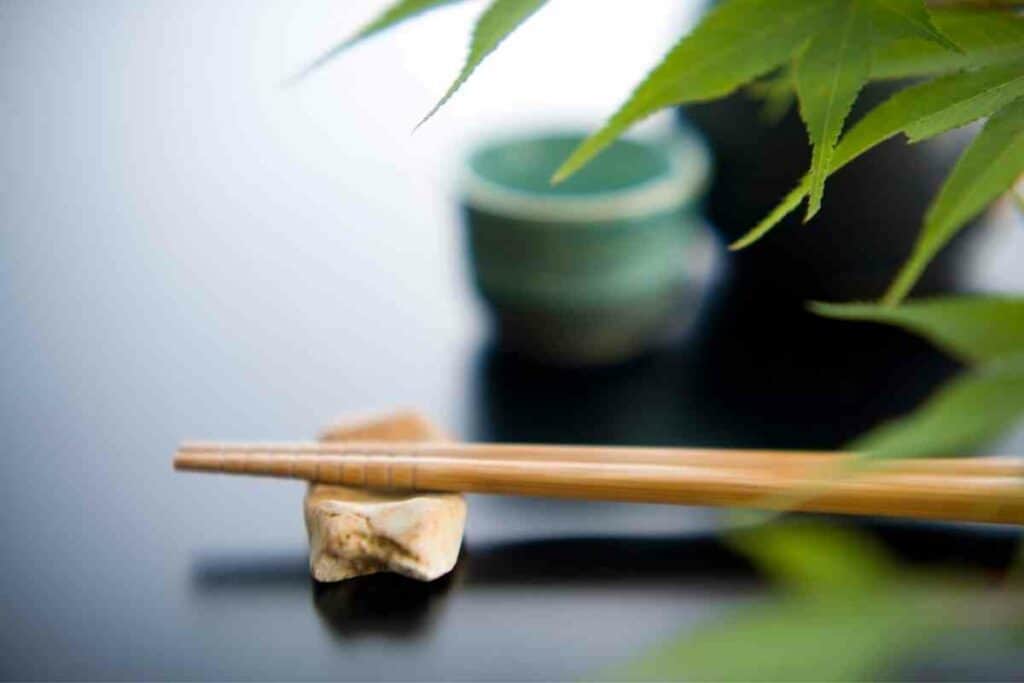
But opening this plastic packaging can be difficult if you’ve never done it before:
- Find the pull tab at the top of onigiri. Pull this tab down in front of the onigiri, around the back, and back up to the top on the other side. This separates the plastic into two halves.
- Pull off the right side very carefully. This will still be attached at the top of the packaging, so removing it might be a little tight, and pulling too hard can tear your onigiri apart.
- Once the right side is off, all you have left to do is slide the left side off. Still, be careful just in case a seal was created, but it should come off with ease.
Final Thoughts
Onigiri does not need to be a triangle, it’s just the most common shape to find onigiri in.
Onigiri is a versatile and customizable food that can be flavored in many different ways. You can make them at home with fun-shaped molds, or add ingredients before forming them into onigiri.
You can add spices, seasonings, and fillings you can use to flavor your onigiri or cook them in various ways, giving them different flavors.
How you eat your onigiri is up to you- but usually, they’re eaten wrapped in seaweed or kelp.
- Japanese Traditional Sweets (Wagashi): A Guide to Their Origins and Varieties
- A Taste of Japan in Every Bite – Japanese Candy & Snack Box Review
- Bubble Tea vs Boba Compared: What’s the Difference?
- Best Izakaya Foods for a Relaxed Night Out (My Top 10 Picks)
- Edo Kiriko Whiskey Glasses (Japanese Heritage in Every Pour)
- Japanese Viral Foods on Social Media (Discover the Top 10)

